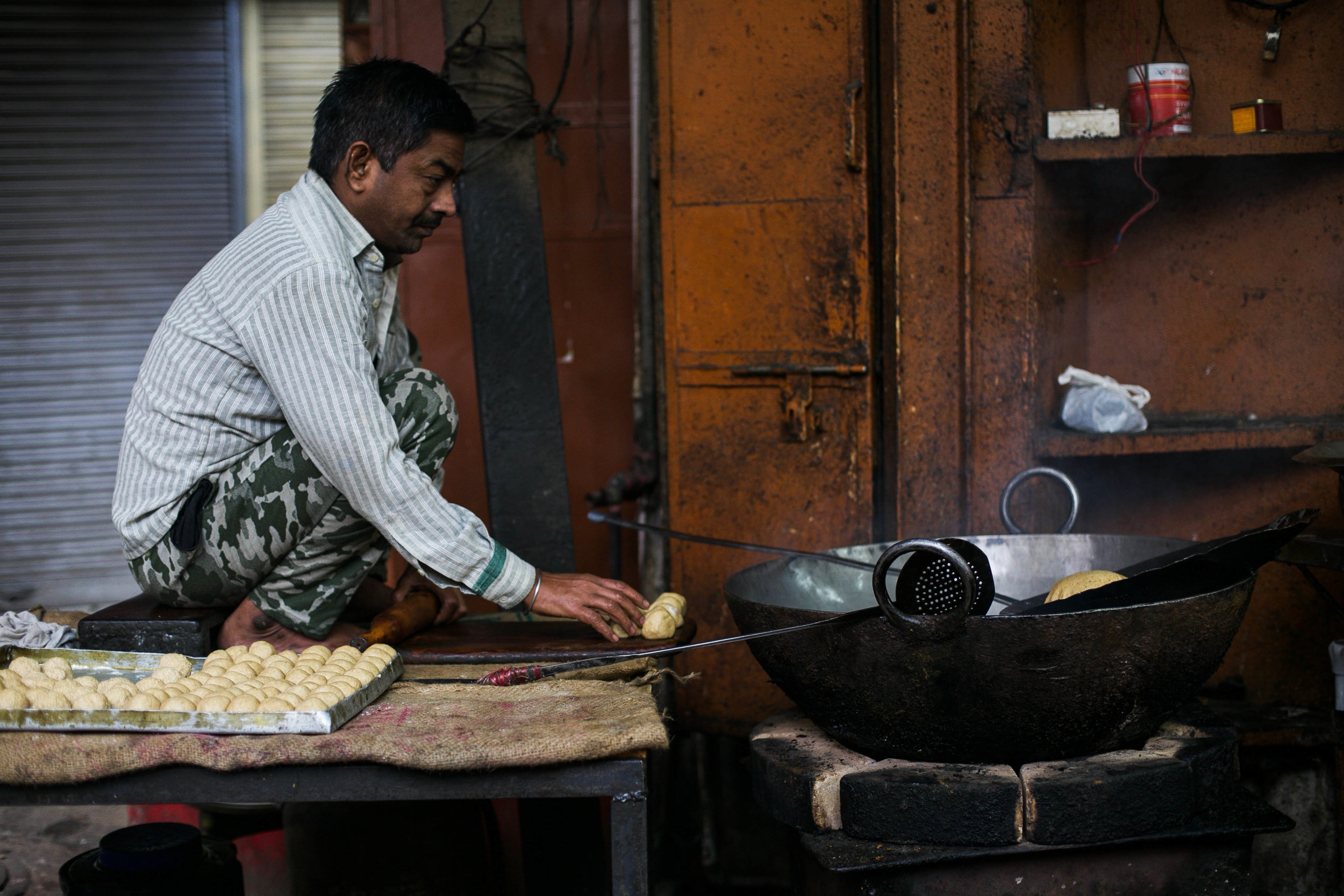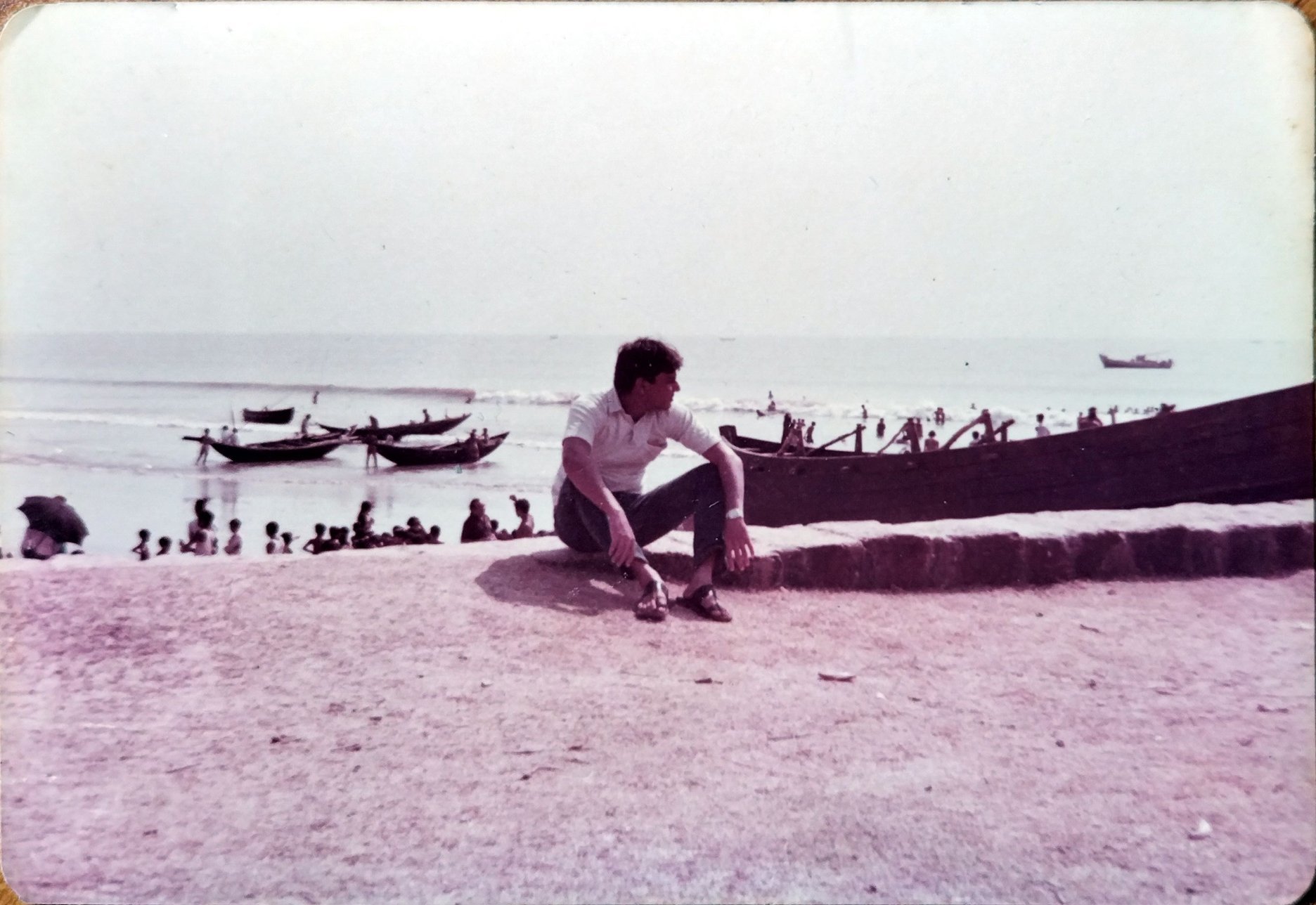Food on the Street — And Why It Matters

In quarantine, we crave the experience of street-food more than ever. Arundhati Ail takes a closer look at street food and what it represents for culture and cuisine.
At Sai Swad Dosa in Ghatkopar, Mumbai, Vijay Reddy mans three steel dabbas containing a tricolour of chutneys — white coconut, green mint and fiery orange schezwan. Beside him, young men work on both sides of a long rectangular tawa. They roll out thick dosa batter with steady hands that understand the rhythms of this exercise by heart. The toppings follow — sauces slathered with abandon, followed by sprinklings of chopped onions, garlic, tomatoes, green chillies and crushed paneer. Well adorned, the dosa is now folded and sliced in motions too swift for the eye to follow. It is finally transferred to a plate, and handed to the waiting customer. Reddy, the owner, keeps a keen eye on every order going out, interacting constantly with the men at work.
“We started about 30 years ago in Parla,” he tells me. “We moved down the road here just a few years back. At the time, all we just was a tawa.” Now they have a slightly bigger space, enough for multiple cooks and, of course, a designated chutney table.
Aloo pyaz kachori in Zaveri Bazaar | Image credit Aamchi Mumbai
Street food is a part of almost every culture in the world. India has a vast and varied street food scene, with every region boasting its own signature delicacies. Delhi has its paranthas and chole-bathures, Lucknow its kebabs, and Mumbai, its pav in myriad forms — pav bhaji, wada pav, dabeli, masala pav. Very often, the same food finds variation across regions too; Mumbai’s paani-puri is Delhi’s gol gappa. My sister, who spent time travelling (and eating) extensively in the capital, still speaks of how odd it was to find her puri stuffed with mashed potatoes instead of the usual mix of sprouts and boondi you find in Mumbai. “People take their chaat very seriously in Delhi. It’s not just a quick bite to grab on the go; it’s an event you plan with friends and family. And you only go to the family-favourite chaat-waala,” she explains. In Hyderabad, on the other hand, most paani-puri vendors are actually selling puchka, as food blogger Karina Acharya points out. “In Mumbai, it’s common to see the warm ragada stuffing. But in Hyderabad, you find the potato and black channa stuffing, seasoned with green chilli paste and lots of coriander.” She also tells me about Hyderabad’s Mirpakaya Bhajji, a batter-fried stuffed green chilli. “You find this in Mumbai too, but the flavours are totally different.”
Flavour intricacies aside, the deeper politics and cultural significance of street food is just as fascinating. In India, as in many other countries, street food shops are inherited and run by multiple generations of the same family. Family recipes are guarded with pride, and dishes are prepared as they have been for decades. These shops and recipes remain constant, even as entire cities change around them. Street food vendors and their food represent, in a way, flavour of the past, surviving — even thriving — in the present.
Ashley Rose Young, a historian who works with the American Food History Project, talks of the melodic cries of vendors that rang through the streets as they sold sweets, cakes and fresh produce in 19th and 20th century, New Orleans. She calls this ‘one-of-a-kind street music,’ known only to locals of the area, much like the distinctly familiar calls of our late-night chaat vendors, anda-pavwalas and ice-cream gaadis.
Apart from being a persistent and stubborn symbol of cultures of the past and present, street food also often breaks down barriers of class. Food at the hawker centres of Singapore, for instance, is savoured by members of the upper, middle and working classes. The otherwise inconspicuous khau-galli in Ghatkopar, comes alive at night, and on weekends, when college students, workers and families stop to enjoy the all-you-can-eat buffet of dosas, sandwiches, chaats and juice on the street. Ravi Kumar Chaudhary, who runs a stall aptly named Cheese on Fire, says his customers come from all over, lining up for their special pizza shots (paani puris stuffed with tomato sauce and veggies and drowned in cheese). Once the shot is ready, it is blow-torched at the counter — theatrics you would only expect to see in gourmet restaurants. Needless to say, the pizza shots are something of a social media sensation now. “The other day a Japanese Youtuber came to taste our food,” Ravi says, proudly, pulling up the video on his phone.
The reason for the apparent disappearance of class distinction on the subject of street food lies in the very space it exists — the street. Abhayraj Naik, in his paper on urban livelihoods, highlights the diverse activities and situations that take place on street, making them a complex space to negotiate: “The street is where public demonstrations, traffic breakdowns, cycling, critical mass demonstrations, carnivals, dinner-time shopping, snack urges, traffic offences, festival celebrations, crimes, prostitution, religious celebrations, public nationalisms, and a whole host of other infinitely varying activities create the component parts of the city street ethos.”
The street then acts as something of a liminal space, not domestic, yet not formal, or institutional. The streets belong to the people, which is why we often see them becoming sites of gathering for those who would ordinarily not interact at all – sites of protests, marches and candlelight vigils. It is an equalizer in the most humbling way, and in many ways, represents the real, true experience of a city and its people.
Consequently, the street trade works as an informal economy, and exists in an ecosystem of its own. Krishnendu Ray, professor of Food Studies at NYU, explains that the food provided on streets also challenges existing expectations of gastronomy. Food on the streets is local, familiar and sells solely on the basis of taste. The street food experience does not promise beautiful ambience. In fact, it is often an eating experience that one would classify as uncomfortable: You eat standing up, balancing a plate in one hand, bag held steady between your legs. And in the midst of the noise, traffic and pollution, you practically need to wolf down that paani-puri to keep pace with the vendor. And yet, despite all its misgivings, we crave the experience and savour the food. Because street food gives us an eating experience devoid of frills and fancies. Instead, it relies entirely on vendors’ unique ability to work with incredibly limited resources and provide distinctly local flavours.
The flipside of the liminal nature of street and food vendors, however, is the challenge they pose to city planners and growing efforts at urban development. In several places, like Shanghai and Bangkok, street vendors have been cleared off the street due to concerns of littering, pollution and overcrowding. In Singapore, Hawkers Centres exist under threat of being wiped out due to the construction of malls. Such efforts have been seen in India as well. Ray calls this “The Developmentalist Delusion,” referring to the idea of clearing out streets to allow progress as one that views poorer people — those occupying sidewalks or selling their wares on streets – as obstructions to smooth flows.
But if you ever just walk by a khau galli, with its familiar sights and sounds — the rhythmic chopping of vegetables, the sizzle of butter on a hot pan, busy hands working over large kadhais, and ordinary people eating with quiet delight — what you will see is not an obstruction; in fact, the very opposite. It is the creation of local culture. The noisy, busy harmony of the city and its people, as they cook and eat on common ground – the streets.
Arundhati Ail is a Mumbai-based writer interested in exploring the intersections of food, culture, history and identity.
ALSO ON THE GOYA JOURNAL








